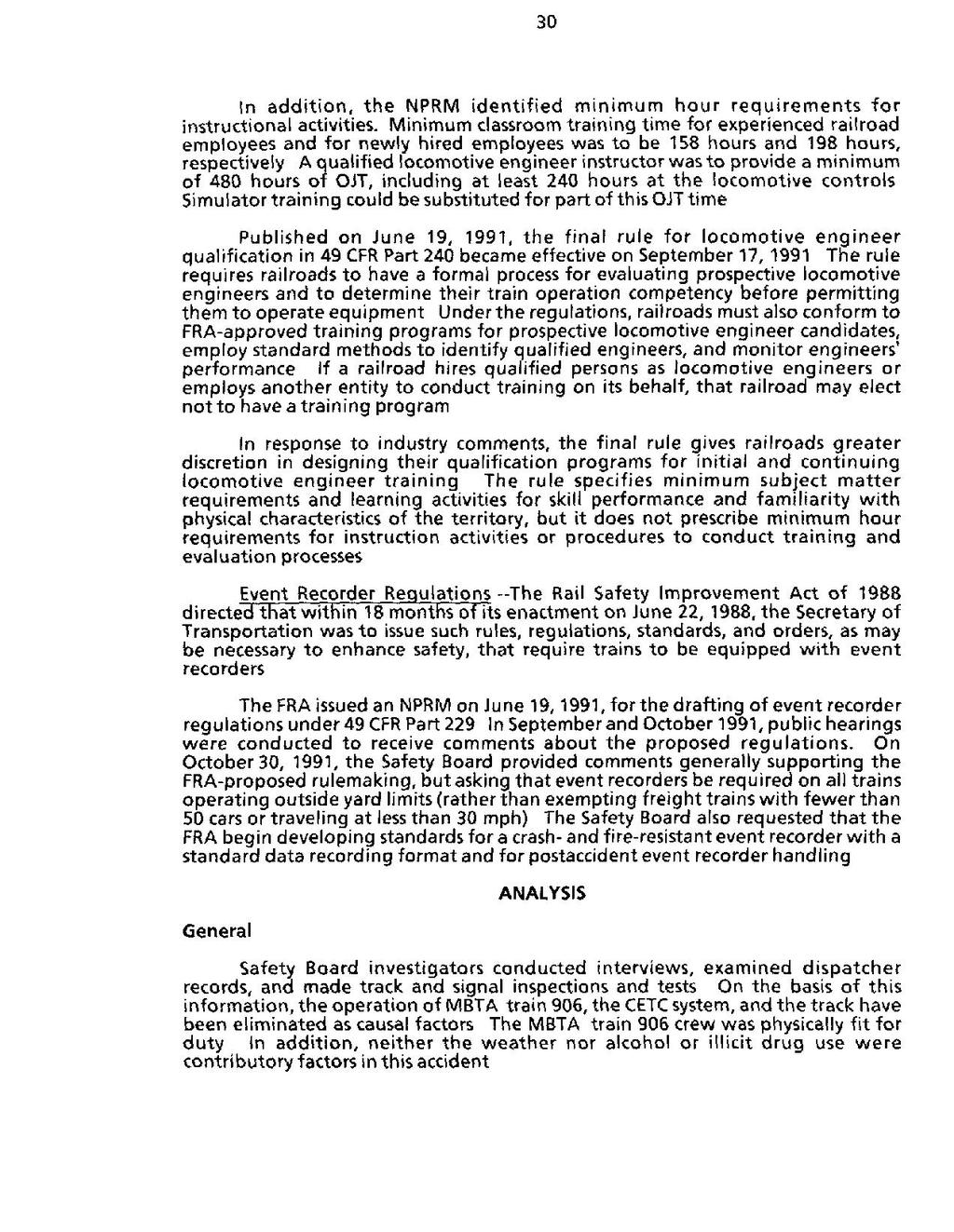30
In addition, the NPRM identified minimum hour requirements for instructional activities. Minimum classroom training time for experienced railroad employees and for newly hired employees was to be 158 hours and 198 hours, respectively. A qualified locomotive engineer instructor was to provide a minimum of 480 hours of OJT, including at least 240 hours at the locomotive controls. Simulator training could be substituted for part of this OJT time.
Published on June 19, 1991, the final rule for locomotive engineer qualification in 49 CFR Part 240 became effective on September 17, 1991. The rule requires railroads to have a formal process for evaluating prospective locomotive engineers and to determine their train operation competency before permitting them to operate equipment. Under the regulations, railroads must also conform to FRA-approved training programs for prospective locomotive engineer candidates, employ standard methods to identify qualified engineers, and monitor engineers' performance. If a railroad hires qualified persons as locomotive engineers or employs another entity to conduct training on its behalf, that railroad may elect not to have a training program.
In response to industry comments, the final rule gives railroads greater discretion in designing their qualification programs for initial and continuing locomotive engineer training. The rule specifies minimum subject matter requirements and learning activities for skill performance and familiarity with physical characteristics of the territory, but it does not prescribe minimum hour requirements for instruction activities or procedures to conduct training and evaluation processes.
Event Recorder Regulations—The Rail Safety Improvement Act of 1988 directed that within 18 months of its enactment on June 22, 1988, the Secretary of Transportation was to issue such rules, regulations, standards, and orders, as may be necessary to enhance safety, that require trains to be equipped with event recorders.
The FRA issued an NPRM on June 19, 1991, for the drafting of event recorder regulations under 49 CFR Part 229. In September and October 1991, public hearings were conducted to receive comments about the proposed regulations. On October 30, 1991, the Safety Board provided comments generally supporting the FRA-proposed rulemaking, but asking that event recorders be required on all trains operating outside yard limits (rather than exempting freight trains with fewer than 50 cars or traveling at less than 30 mph) The Safety Board also requested that the FRA begin developing standards for a crash- and fire-resistant event recorder with a standard data recording format and for postaccident event recorder handling.
ANALYSIS
General
Safety Board investigators conducted interviews, examined dispatcher records, and made track and signal inspections and tests. On the basis of this information, the operation of MBTA train 906, the CETC system, and the track have been eliminated as causal factors. The MBTA train 906 crew was physically fit for duty. In addition, neither the weather nor alcohol or illicit drug use were contributory factors in this accident.
